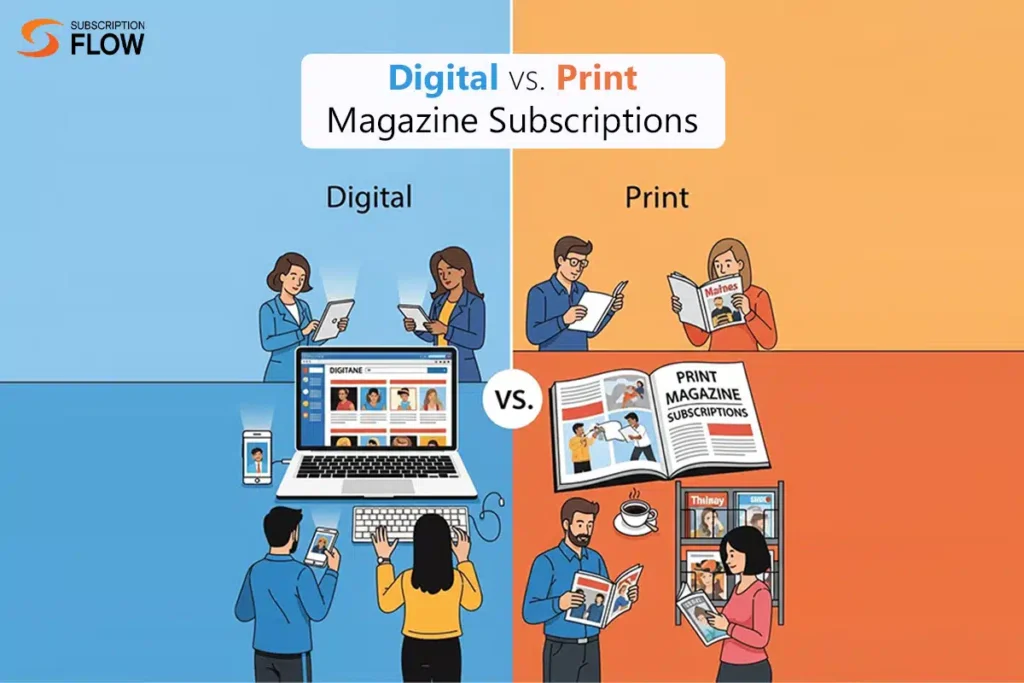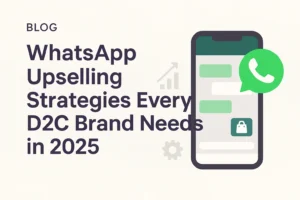
In an era where digital media dominates, the debate between digital and print magazine subscriptions continues to evolve. While digital subscriptions offer convenience and accessibility, print magazines still hold a nostalgic and tactile charm for many readers. Whether you’re a publisher, content creator, or consumer, understanding the pros and cons of each format is crucial in navigating the modern media landscape.
Digital vs. Print Magazine Subscriptions: How to Manage Both Seamlessly
The Rise of Digital Magazine Subscriptions
Digital magazines have grown tremendously over the past decade. With the rise of smartphones, tablets, and e-readers, readers can now access their favorite publications anytime, anywhere. This shift has led to a significant transformation in how content is delivered and consumed.
One of the biggest advantages of digital magazine subscriptions is instant access. Subscribers don’t have to wait for delivery—new issues can be downloaded in seconds. Additionally, digital formats are environmentally friendly, reducing the need for paper, ink, and shipping.
Digital magazines also allow for enhanced interactivity. From embedded videos to clickable links and real-time updates, readers enjoy a more dynamic and engaging experience. Publishers benefit from the ability to collect data and analytics, helping them better understand reader behavior and improve content strategies.
Why Print Still Matters
Despite the surge in digital consumption, print magazines haven’t vanished. In fact, many readers still prefer the tangible feel of flipping through physical pages. For some, print provides a break from screen fatigue, offering a more focused and immersive reading experience.
Print magazines also carry a sense of permanence and quality. Beautiful layouts, high-resolution images, and textured paper add to the aesthetic appeal that digital often lacks. For collectors and enthusiasts, print editions can be a source of pride and a valued keepsake.
Moreover, certain demographics—especially older audiences—still gravitate toward print due to familiarity and ease of use. Businesses that cater to these groups often find success by offering print options.
The Hybrid Subscription Model
To bridge the gap between digital and print, many publishers now offer hybrid subscription models. This approach gives subscribers the flexibility to choose their preferred format or enjoy both. A hybrid model can increase customer satisfaction and retention by catering to a wider audience.
With subscription management platforms like SubscriptionFlow, publishers can seamlessly manage these hybrid offerings. From billing automation to subscriber segmentation and analytics, these platforms ensure a smooth experience for both the business and its customers.
Factors to Consider When Choosing a Format
When deciding between digital and print magazine subscriptions, it’s important to consider your target audience, content type, and business goals.
-
Audience Demographics: Younger, tech-savvy readers are more inclined toward digital formats, while older audiences may prefer print.
-
Content Type: Visual-heavy publications (e.g., fashion, art, photography) often shine in print, whereas news and tech magazines thrive digitally.
-
Distribution and Reach: Digital formats enable global distribution at minimal cost, ideal for expanding readership.
-
Sustainability Goals: Companies with green initiatives may lean toward digital to minimize their environmental impact.
Leveraging Subscription Management Software
Managing magazine subscriptions—especially with multiple formats—can be complex. A robust subscription management system can simplify operations by automating billing, renewals, customer engagement, and analytics. Platforms like SubscriptionFlow empower publishers with the tools they need to scale and adapt to evolving consumer preferences.
Using AI and automation, such platforms not only streamline back-end processes but also enhance personalization, leading to improved reader satisfaction and loyalty. From sending personalized offers to segmenting customers based on reading habits, a good subscription platform helps publishers make data-driven decisions.
The Future of Magazine Subscriptions
As the media industry continues to transform, the line between digital and print will blur even further. Innovations like augmented reality (AR) in print and immersive storytelling in digital will redefine how readers interact with content.
Ultimately, the key to success lies in offering choice and flexibility. By understanding the strengths of both formats and leveraging technology, publishers can deliver value across channels and build lasting relationships with their subscribers.
Conclusion
The debate between digital and print magazine subscriptions isn’t about choosing one over the other—it’s about finding the right balance. Digital offers speed, convenience, and interactivity, while print delivers depth, focus, and visual appeal. With the right strategy and tools, businesses can cater to diverse reader preferences and thrive in today’s hybrid content landscape.




